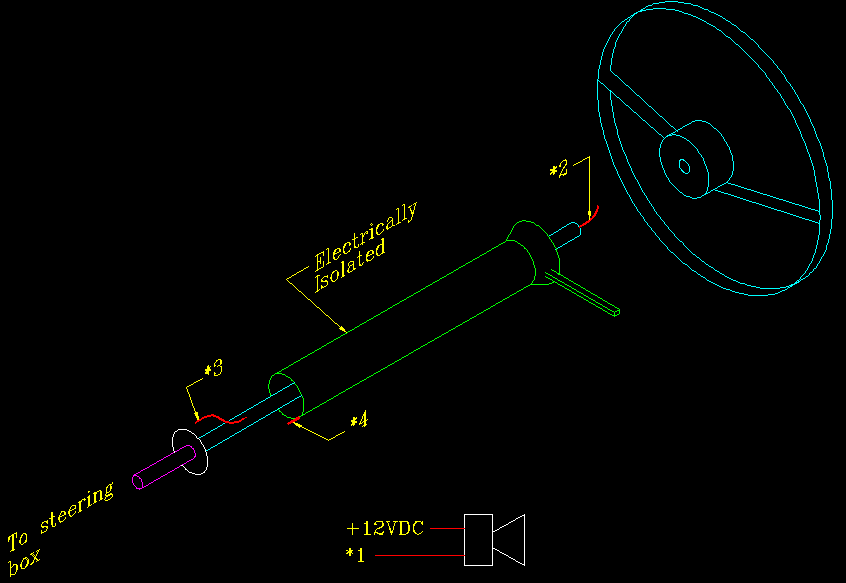

That wire coming up through the middle of the steering column does not have 12 volts on it.
If you have the original wire, it will be brown. The VW factory used brown for wires going to ground.
Here is what is going on on most Beetles, and with the inclusion of a relay, on Karmann Ghia's.
The first thing to remember is that the steering shaft is electrically isolated from ground by insulators at the top and bottom of the shaft.
The bottom of the shaft is connected through a rubber/fiber coupler to the steering box.
The wire (#3 above) crosses over the rubber/fiber coupler and attaches to a ground connection on the steering box that rotates with the shaft.
When the button is pressed, the ground cicuit is completed to the electrically isolated steering shaft.
There is a contact in the turn signal switch that touches the steering shaft.
That contact goes to one side of the horn, the other side of the horn goes to positive battery voltage.
The drawing, which is not correct (at least for 1968 and later model years), shows the outer housing on the steering column isolated. Actually, only the shaft is isolated and the outer housing is bolted to the dash and therefore electrically gounded.
In the diagram #4 on the shaft connects to #1 on the horn. On my car, and others I have worked on, the connection to the horn is made from a wire coming from the turn signal switch.
On a Karmann Ghia there are two horns. The engineers decided there would be too much current for the contact on the horn button and put a relay between the wire coming from the steering column and the wires going to the horns.
If your horn sounds unexpectedly, check the fiber/rubber ring at the bottom of the steering shaft.
I've often wondered if the german engineers that designed this realized they were putting a safety device in for the the driver. When the coupler starts to go bad, the horn sounds. If the problem is ignored and the coupler breaks you loose all steering. So, listen to your car.